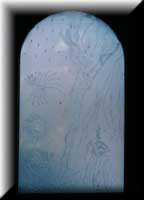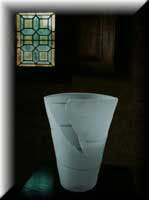
The general principle of François Vigorie's artistic approach began in 1978 when he carried out transparent sculpture in direct cutting. A passionate career and vocation asserted itself in 1975 when he interrupted his studies in electrical and mechanical engineering at the Ecole Violet.





When he sculpts, François Vigorie cannot have any regrets or tentative efforts, no searching, no error of any kind, because of the rapidity of execution. He"skins", hollows out, but does not add on, it is the absence of matter that creates both the volume and the image. The art critic G.Xuriguera wrote in"Cimaise"in 1996 to conclude his article about F.Vigorie: "… Following these volumes perpetually giving birth, where light is consubstantial with form and where the core of the form hasn't defined roots, Vigorie speaks to us of the living transcendance of the inert. By drawing mind and matter together in this rise towards light, that exhales his intimate feelings and his human sense, since "transparency, as he mentions, is like human nature", he not only emits primordial energy but also translates the mystery of discovery that, little by little he makes about himself, and the potentiality of his chosen material."

François Vigorie's work has been recognised by the institutions and his works are exhibited at the Musée des Arts Décoratifs in Paris, the Glass Museum at Charleroi in Belgium, the Museum of Sars poterie, the Musée des Beaux Arts in Bordeaux and Rouen. He figures in the private collections of: Corning-Avon France, Lintas-Paris, Irvin Borowsky Laurie Wagman-USA, The Contemporary Art Museum in Tokyo. F.Vigorie has created specific pieces and trophies for the companies: Christofle, Rank-Xeros, General Motors and Moet&Chandon. He was selected for the ADAGP J.M Drot award and the Grand Prix de la Communication d'entreprise, the Saint Bacchus and by the Association des Amis de G. Apollinaire for the creation of a sculpture table. Today, he spends his time creating and doing research in his studio in Corrèze as well as exhibitions. In Paris-"L'éclat du verre" gallery at the Louvre des antiquaires will hold a private exhibition for him in December 2000 .He exhibits permanently at the Galerie D. Besseiche in Deauville and Courchevel.




